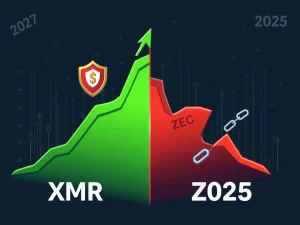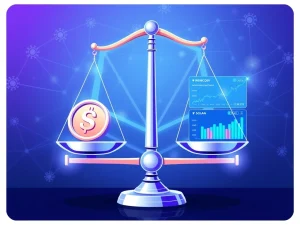Unlock Rewarding Passive Crypto Income with Yield-Bearing Stablecoins in 2025

The quest for steady returns has long guided investors toward traditional assets. Think dividend stocks, real estate, or government bonds. In 2025, however, cryptocurrency offers a compelling new avenue: yield-bearing stablecoins. These innovative digital tokens do more than simply maintain their value against the dollar. They actively generate a consistent income while held in your wallet. Consequently, they present an exciting opportunity for those seeking to earn passive crypto income. Before diving in, understanding their mechanisms, legal frameworks, and tax implications is crucial. Let’s explore how these assets work.
Understanding Yield-Bearing Stablecoins in 2025
Traditional stablecoins, such as Tether’s USDt (USDT) or USDC, peg their value to the dollar. However, they do not inherently offer returns for holding them. Yield-bearing stablecoins differ significantly. They automatically distribute returns from underlying assets or sophisticated strategies directly to tokenholders. This creates a distinct advantage for investors. Primarily, three major models operate today, each with unique characteristics:
- Tokenized Treasuries and Money Market Funds: These stablecoins rely on safe, traditional assets. They are backed by short-term US Treasurys or bank deposits. The yield generated from these holdings then passes back to the tokenholders. This often happens by increasing the token balance or adjusting its redeemable value. You can effectively view them as blockchain-wrapped versions of conventional cash-equivalent funds.
- Decentralized Finance (DeFi) Savings Wrappers: Protocols like Sky (formerly MakerDAO) allow users to lock stablecoins, such as Dai (DAI), into a specific “savings rate” module. When wrapped into tokens like sDAI, your balance grows over time. The protocol’s governance sets this rate.
- Synthetic Yield Models: Some advanced stablecoins, powered by derivatives strategies, generate yield from crypto market funding rates or staking rewards. These returns can be higher, yet they also fluctuate more depending on dynamic market conditions.
A Guide to Earning Passive Crypto Income
Indeed, you can earn passive crypto income with yield-bearing stablecoins. However, the specific steps vary by product. Here is a typical journey for investors:
- Choose Your Stablecoin Type: If you prefer lower risk and traditional backing, consider tokenized treasury-backed coins or money-market fund tokens. Conversely, if you accept DeFi risk, sDAI or similar savings wrappers might suit you. For higher potential yield, albeit with increased volatility, synthetic stablecoins like sUSDe could be a good fit.
- Buy or Mint the Stablecoin: You can acquire most of these tokens on centralized exchanges, which require Know Your Customer (KYC) verification. Alternatively, you can purchase them directly through a protocol’s website. Importantly, some issuers restrict access based on geography. For instance, many US retail users cannot buy tokenized treasury coins due to securities laws. These are typically limited to qualified or offshore investors. Stablecoin minting also faces restrictions. To mint, you deposit dollars with the issuer, who then creates new stablecoins. This option is not universally available; many issuers limit minting to banks, payment firms, or qualified investors. Circle, for example, allows only approved institutional partners to mint USDC directly. Retail users must buy USDC already in circulation.
- Hold or Stake for Stablecoin Yield: Once purchased, merely holding these yield-bearing stablecoins in your wallet may be enough to earn yield. Some systems use rebasing, where your balance increases daily. Others employ wrapped tokens that grow in value over time.
- Use in DeFi for Extra Earnings: Beyond the built-in yield, some holders deploy these tokens in lending protocols, liquidity pools, or structured vaults. This generates additional income streams. However, this strategy introduces more complexity and risk, so proceed with caution.
- Track and Record Your Income: Even as tokens grow automatically, tax rules in most countries treat these increases as taxable income upon receipt. This applies regardless of whether you sell the tokens. Maintain precise records of when and how much yield you received.
Did you know? Some yield-bearing stablecoins distribute returns through token appreciation rather than issuing new tokens. This means your balance remains constant, but each token becomes redeemable for more underlying assets over time. This subtle difference can impact how taxes are calculated in certain jurisdictions.
Exploring Top Yield-Bearing Stablecoin Examples
Not every product appearing as a yield-bearing stablecoin truly fits the definition. Some are genuine stablecoins, others are synthetic dollars, and some are tokenized securities. Let’s clarify their distinctions:
True Yield-Bearing Stablecoins
These assets are pegged to the US dollar, backed by reserves, and specifically designed to deliver yield. They represent a direct approach to generating stablecoin yield.
- USDY (Ondo Finance): This is a tokenized note. It is backed by short-term treasuries and bank deposits. USDY is exclusively available to non-US users who complete full KYC and Anti-Money Laundering (AML) checks. Transfers into or within the US are restricted. USDY functions as a rebasing instrument, reflecting Treasury yields.
- sDAI (Sky): sDAI acts as a wrapper for DAI deposited into the Dai Savings Rate. Your balance increases at a variable rate, determined by Maker governance. It enjoys wide integration within DeFi. However, it relies on smart contracts and protocol decisions, not insured deposits.
Synthetic Stablecoins
These assets mimic stablecoins. They utilize derivatives or other complex mechanisms rather than direct reserves to maintain their peg and generate returns. This model offers another pathway to crypto passive income.
- sUSDe (Ethena): Known as a “synthetic dollar,” sUSDe stabilizes its value through a strategy involving long spot crypto positions combined with short perpetual futures. Holders of sUSDe earn returns from funding rates and staking rewards. Returns can compress quickly. Risks include significant market swings and exchange exposure.
Tokenized Cash Equivalents
These are not strictly stablecoins. Yet, they often serve as “onchain cash” within DeFi ecosystems. They offer institutional investors a way to earn crypto income from traditional assets.
- Tokenized Money Market Funds (e.g., BlackRock’s BUIDL): These represent tokenized shares in money market funds. They pay dividends monthly in the form of new tokens. Access is typically limited to qualified investors and institutions. This makes them popular with DeFi protocols but generally out of reach for retail users.
Navigating Regulation for Crypto Passive Income
Regulation now plays a central role in determining access to certain yield-bearing stablecoins. Consequently, understanding the legal landscape is paramount for any investor seeking to earn passive crypto income.
United States (GENIUS Act)
In 2025, the US passed the GENIUS Act. This landmark legislation became its first federal stablecoin law. A key provision within this act bans issuers of payment stablecoins from paying interest or yield directly to holders. This means tokens like USDC or PayPal USD (PYUSD) cannot reward you simply for holding them. The primary goal is to prevent stablecoins from competing directly with banks or being classified as unregistered securities. As a direct result, US retail investors cannot legally receive passive yield from mainstream stablecoins. Any yield-bearing versions are typically structured as securities. They are then restricted to qualified investors or offered offshore to non-US users.
European Union (MiCA)
Under the Markets in Crypto-Assets (MiCA) framework, issuers of e-money tokens (EMTs) also face a prohibition on paying interest. The EU strictly treats stablecoins as digital payment instruments, not savings vehicles. This policy aligns with the US approach.
United Kingdom (Ongoing Rules)
The UK is finalizing its own stablecoin regime. It focuses on issuance and custody. While not yet an explicit ban, the policy direction mirrors that of the US and EU. Stablecoins, in this view, should primarily serve payments, not yield generation. The clear message for investors is crucial: Always verify if you are legally permitted to buy and hold a yield-bearing stablecoin in your specific jurisdiction.
Tax Considerations for Your Stablecoin Yield
Tax treatment is just as critical as selecting the right coin. Ignoring these rules can lead to significant complications. For instance, in the US, staking-style rewards, including rebases, are taxed as ordinary income upon receipt. This applies regardless of whether you later sell the tokens. If you dispose of those tokens at a different value, that action triggers capital gains tax. Furthermore, 2025 introduced new reporting rules. These make it mandatory for crypto exchanges to issue Form 1099-DA. Taxpayers must now track cost basis per wallet, making accurate record-keeping more vital than ever for your crypto passive income.
Globally, new reporting rules (DAC8 in the EU, CARF internationally) mean crypto platforms will automatically report your transactions to tax authorities from 2026 onward. In the UK, HMRC guidance classifies many DeFi returns as income. Disposals of tokens are also subject to capital gains tax. Consequently, comprehensive record-keeping is indispensable for anyone seeking to earn crypto income from these assets.
Mitigating Risks When You Earn Crypto Income
While yield-bearing stablecoins offer attractive returns, they are not without risk. Investors must carefully consider these factors:
- Regulatory Risk: Laws can change rapidly. This might shut off access to certain products or even lead to their winding down.
- Market Risk: For synthetic models, yield depends on volatile crypto markets. This yield can disappear overnight.
- Operational Risk: Smart contracts, custody arrangements, and governance decisions all affect your holdings. Flaws in any of these areas pose a threat.
- Liquidity Risk: Some stablecoins restrict redemptions to specific investors. Others impose lock-ups, limiting your ability to access funds.
Therefore, chasing stablecoin yield is not the same as parking cash in a traditional bank account. Each model—whether Treasury-backed, DeFi-native, or synthetic—carries its own trade-offs. The smartest approach involves sizing positions cautiously. Diversify across issuers and strategies. Always monitor regulation and redemption policies. The best way to proceed is to treat stablecoin yields as an investment product, not risk-free savings. This article does not contain investment advice or recommendations. Every investment and trading move involves risk, and readers should conduct their own research when making a decision.









